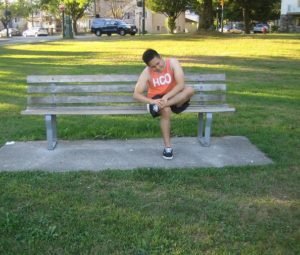A sprained ankle is a common injury seen in healthcare facilities almost on a daily basis. Once the ankle is sprained, one or several ankle ligaments are stretched or torn. The injury often occurs once the toes are on the ground, but the heel is up and walking on uneven surfaces. The ankle can also turn inwards which can damage the ligaments.
The ankle ligaments provide mechanical stability to allow movement of the joint as well as provide a sense of where the ankle joint is. The usually sprained ligaments are those in the exterior of the ankle and on the farthest side from the other ankle. Nevertheless, it is also possible for the ligaments on the interior of the ankle to be damaged.
If a sprained ankle is suspected, a doctor should be consulted. Even though an X-ray is not needed, the doctor might decide to take one to ensure that there is no fracture and figure out a suitable treatment plan.

What should I do?
The doctor might advise the individual to:
- Immobilize the affected ankle using an inflatable splint.
- Utilize the RICE method (rest, ice, compression, elevation)
- Minimize any weight on the ankle if possible by using crutches
- Move the ankle with guidance from the doctor
- Use anti-inflammatory medications
In severe cases, the doctor will place a cast on the foot and ankle for 10-14 days. The doctor might even recommend an ankle brace to be used for a few months, especially during high-risk activities such as volleyball or basketball as well as hiking or climbing stairs.
Recovery after a sprained ankle
Depending on the severity of a sprained ankle, it should be given time to recover. The initial step is to rest the ankle, protect it from injury and minimizing the swelling by using the RICE method.
The next step is to strengthen the ligaments and muscles and restore the range of motion.
The last step involves activities in which the foot is moved in a straight line and later followed by sports that involve side-to-side movements.
If an individual has a sprained ankle, it is vital to follow the rehabilitation program to prevent further injury. Once the ankle is completely recovered, it should stay in good shape with strengthening and flexibility exercises.
Disclaimer / More Information
The information posted on this page on a sprained ankle is for learning and educational purposes only. To learn to manage muscle and joint injuries including a sprained ankle, register for first aid training at one of our training centers located throughout Canada. The training centers are located in Edmonton, Calgary, Vancouver, Kelowna, Surrey, Winnipeg, Toronto, Ottawa and Halifax.
